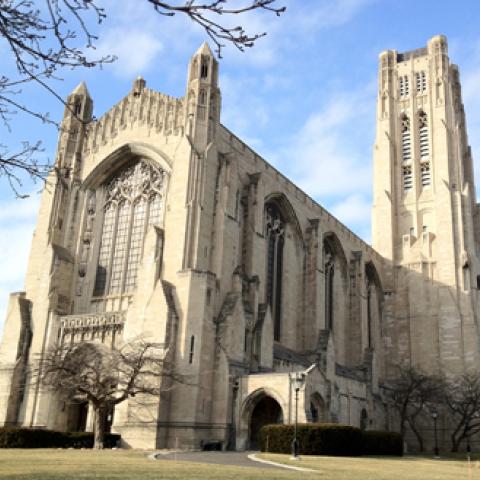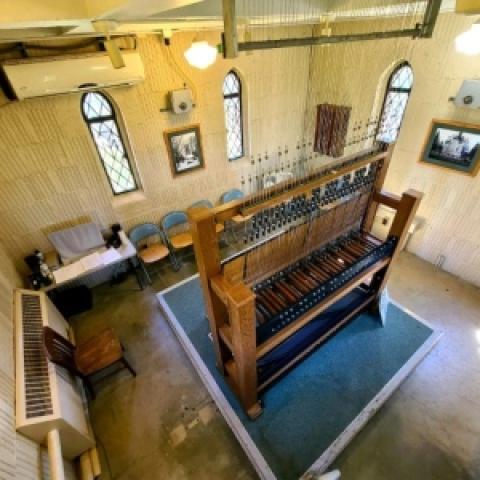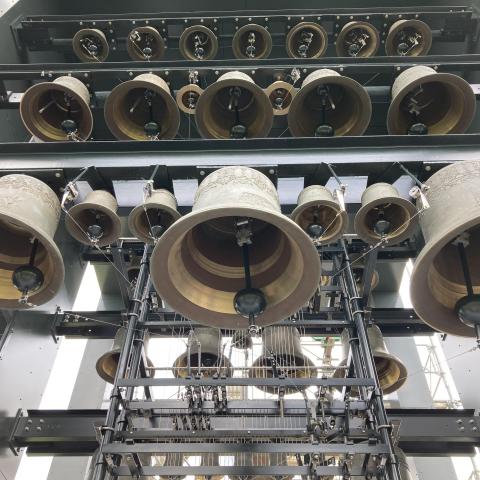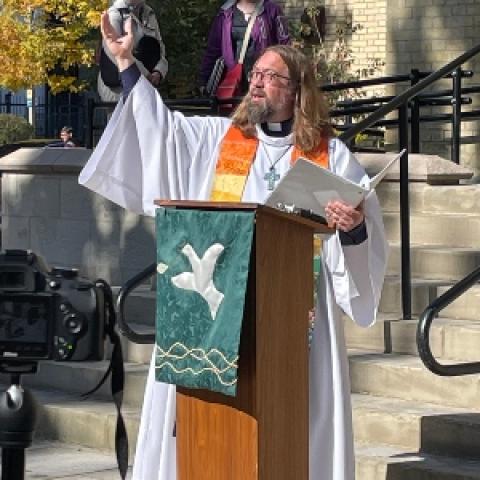
Laura Spelman Rockefeller Memorial Carillon, Rockefeller Memorial Chapel, University of Chicago, Chicago, Illinois
The University of Chicago’s Rockefeller Memorial Chapel houses one of the crown jewels of carillons worldwide—the Laura Spelman Rockefeller Memorial Carillon. The 72-bell instrument is a sister to the other carillon donated by John D. Rockefeller, Jr.—the carillon in The Riverside Church in New York City. Both carillons were cast by Gillett & Johnston of Croydon, England, and they are the two largest carillons in the world by weight, with Chicago’s carillon second heaviest at over 100 tons. The Laura Spelman Rockefeller Memorial Carillon was cast over a three-year period and installed in 1932. The university proudly celebrates the 90th anniversary of the carillon’s installation by hosting the annual congress of the Guild of Carillonneurs in North America in June 2022 (gcna.org).
The carillon’s mechanics and design bear some hallmarks of Gillett & Johnston’s style while also incorporating contemporary features. The bells possess a rich, full tone because of their fine craftsmanship and extra-large profile, true to the Gillett & Johnston tradition. The large range of the keyboard was of the foundry’s own design, similar to that of their instrument in New York, before unifying keyboard standards were adopted by carillon guilds. The keyboard transposes down four semitones, intensifying the bells’ low register and long resonance. The largest nine bells of the carillon were connected to an electro-pneumatic mechanical system to ring the time in 15-minute increments and to ring the six largest bells via an electric switchbox mounted directly on the carillon keyboard.
In 2005, members of the university administration solicited gifts from alumni to fund an organ and carillon renovation on the occasion of University President Don Michael Randel’s retirement and 65th birthday. Through these generous donations, Eijsbouts of the Netherlands was able to execute a full-scale renovation in 2007 and 2008. The transmission system was updated from a roller bar to directed crank, and the bells were repositioned on a new frame to allow for better sound transmission from the belfry to the ground. All clappers were replaced. The original playing cabin was dismantled, rebuilt, and repositioned within the tower, allowing for better sound transmission and playability from the keyboard. The original keyboard frame was retained but outfitted with an updated World Carillon Federation keyboard design. The electro-pneumatic mechanical system was decoupled from the carillon transmission system in the bass bells, making them more playable for the carillonist. The highest 46 bells were slightly retuned to offset the effects of corrosion over the decades. All in all, the carillon became more consonant, resonant, playable, and easier to hear for audiences.
The original Gillett & Johnston practice keyboard is currently being restored by the B. A. Sunderlin Bellfoundry of Ruther Glen, Virginia. The foundry cast new tone bars and rebuilt the transmission for the full six-octave keyboard. The project is expected to be completed in time for the GCNA Congress in June.
Joey Brink, a member of The Diapason’s 20 Under 30 Class of 2015, has been university carillonist since September of that year, although he will be stepping down in September 2022 (see page 3). An active student carillon guild involves undergraduate, graduate, and professional students in carillon instruction and activities. About twenty students per year enroll in weekly carillon lessons led by Brink, and they assist in playing daily recitals and leading tower tours.
The carillon is played each day, 12:00–1:00 p.m. and 5:00–6:00 p.m., during the academic quarters. Recitals are performed by Brink and students of the carillon guild. The Sunday noon concert, following the chapel service, is programmed and performed by Brink or other local professionals. The carillon is also played for special occasions in the Rockefeller Chapel, including weddings, funerals, and university convocations.
—Kimberly Schafer, PhD
Carillonist and campanologist
Chicago, Illinois
Carillon website: rockefeller.uchicago.edu/the-carillon







